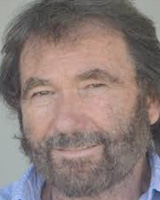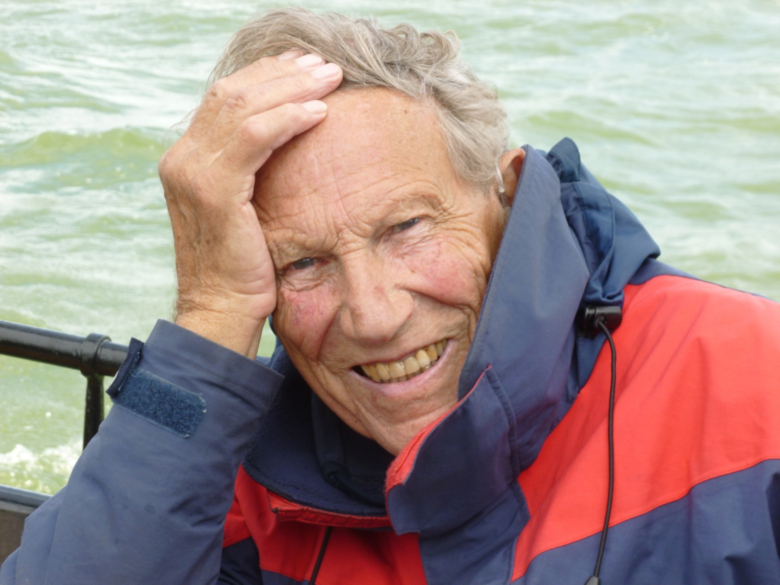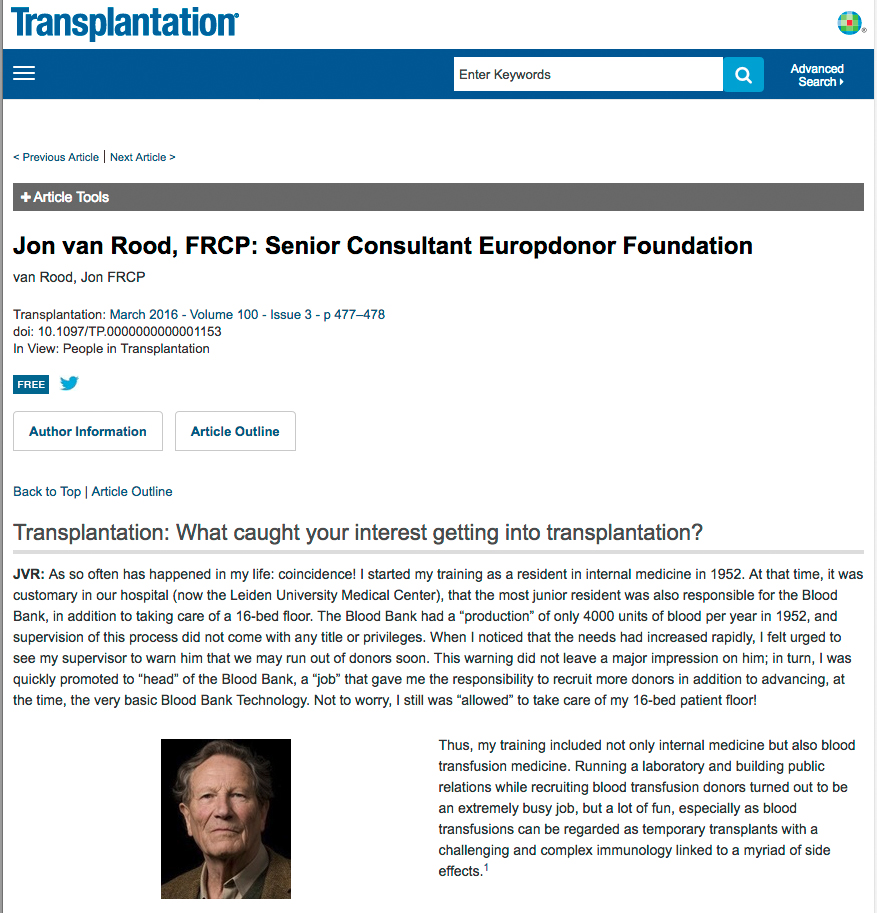
KDIGO Announces Publication of the Living Kidney Donor Guideline

(Brussels, Belgium) - Kidney Disease: Improving Global Outcomes (KDIGO) announces the publication of the Clinical Practice Guideline on Living Kidney Donation this week in the journal Transplantation. The guideline is based on global science and focuses on the evaluation of potential living kidney donors and the care of donors after donation.
Living kidney donation is an important option for many patients with kidney failure. It does, of course, involve another individual who must make an informed decision about donating. The KDIGO Living Donor Guideline examines the benefits and risks involved in that decision. While it may considerably enhance the quality of life of the recipient, it may also involve risks for the donor. An expert Work Group, co-chaired by Drs. Amit Garg of Canada and Krista Lentine of the US, developed the guideline with assistance from an independent evidence review team from University of Minnesota and Minneapolis Veterans Affairs Center for Chronic Disease Outcomes Research.
This guideline was supported in part by The Transplantation Society. It also includes data analyses and an ESKD Risk Calculator developed by the Chronic Kidney Disease-Prognosis Consortium led by Dr. Josef Coresh of Johns Hopkins. The full text of the guideline and the calculator can be found on the KDIGO website: www.kdigo.org.
David Wheeler, co-chair of KDIGO said, "We are very pleased to provide this guideline to the global transplant and kidney communities so that informed and scientifically based information is available when living kidney donation is being considered. Our belief is that those decisions should be made with complete understanding of the risks and benefits involved for the donor."
"Living donation is often the best chance our kidney failure patients have to resume a normal life and restored health. It is a unique part of today's medical care where a person with perfectly normal health undergoes a major operation and gives up a part of his body solely to benefit another person. The benefit is truly great, usually for both of those involved as well as their families. However, such a major decision should be made with a full understanding of the facts regarding risk." Dr. Wheeler added.
The guideline deals with many aspects of living donation, such as the evaluation of potential donors, selection of who can donate, the care of the donor both long and short term after donation and policies to assist donors. Living donors make thousands of transplants possible around the world every year and as such this guideline strives for a comprehensive approach to risk assessment of potential donors and a framework that advocates for transparent and defensible shared decision making.
KDIGO is a Belgian foundation committed to developing and implementing nephrology guidelines that improve patient outcomes on a global basis.
For further information please contact KDIGO at KDIGOcommunications@kdigo.org.
View the guidelines on the Transplantation Journal website
Visit the KDIGO "Living Kidney Donor" pagE on KDIGO.ORG
Transplantation Journal - Featured Article
Submitted by TTS Women in Transplantion Initiative (www.tts-wit.org)
Gender equity in Transplantation: A Report from the Women in Transplantation Workshop of the Transplantation Society of Australia and New Zealand.
Dwyer, Karen M; Clark, Carolyn; MacDonald, Kelli; Paraskeva, Miranda A; Rogers, Natasha; Ryan, Jessica; Webster, Angela; Wong, Germaine
Transplantation: Post Acceptance: August 1, 2017
doi: 10.1097/TP.0000000000001900
The exponential growth of young talented females choosing science and medicine as their professional career over the past decade is substantial. Currently, more than half of the Australian medical doctoral graduates and early career researchers are comprised of women, but less than 20% of all academic professorial staff are female. The loss of female talent in the hierarchical ladder of Australian academia is a considerable waste of government investment, productivity and scientific innovation. Gender disparity in the professional workforce composition is even more striking within the field of transplantation. Women are grossly under-represented in leadership roles, with currently no female Heads of Unit in any of the Australian and New Zealand Transplanting centres. At the same time, there is also gender segregation with a greater concentration of women in lower-status academic position compared to their male counterparts. Given the extent and magnitude of the disparity, the Women In Transplantation Committee, a subcommittee of the Transplantation Society of Australia and New Zealand established a workshop comprising 8 female clinicians/scientists in transplantation. The key objectives were to i) identify potential gender equity issues within the transplantation workforce, ii) devise and implement potential strategies and interventions to address some of these challenges at a societal level, iii) set realistic and achievable goals to enhance and facility gender equality, equity and diversity in transplantation.
Webinar for YOUR Fellows and Students
OPEN TO MEMBERS AND NON-MEMBERS.
FORWARD THIS EMAIL TO YOUR FELLOWS!
|
|
THIS WEBINAR WILL BE GIVEN IN SPANISHTHURSDAY, AUGUST 10, 2017, 11AM EDT (MONTREAL TIME)CHAGAS Y TRANSPLANTE / CHAGAS DISEASE AND TRANSPLANTATION |
TID 2017 will be taking place the day before STALYC
JULY 21: TID 2017 - Early Bird Registration Deadline
TTS will be Exhibiting at STALYC
from Septmber 3 to 6 in Montevideo, Uruguay.
Visit their website - http://www.stalyc2017.com
In Memoriam - Johannes Joseph (Jon) van Rood (1926-2017)
We are sad to announce the passing of one of our distinguished Medawar Prize Laureates.
TTS is saddened by the death of Prof Johannes Joseph (Jon) van Rood, M.D., 91, the Dutch immunologist who made key contributions to the fields of Transfusion Medicine and HLA Histocompatibility for clinical transplantation. Jon passed away on Friday, 21st July 2017 in Leeuwarden, Netherlands. He was born on 7th April 1926 in The Hague, Netherlands to Albert Hendrik van Rood and Anna Marina Adriana Röell.
In 1944, Jon went to study medicine at the University of Leiden. After graduating in 1950, he spent a brief clinical clerkship at the Presbyterian Hospital in New York, and returned to Leiden University to train in Internal Medicine. Soon after the discovery of the first leukocyte antigen MAC in 1958 by Jean Dausset using the sera of poly-transfused patients, Jon discovered that anti-leukocyte antibodies (agglutinins) are induced not only by blood transfusions but also by pregnancy. Jon discovered several leukocyte antigens including the two allelic clusters recognizing 4a and 4b which are now referred to as HLA-Bw4 and HLA-Bw6, respectively. This work led to "Leukocyte Grouping, A Method and Its Application" - Jon's PhD thesis submitted to University of Leiden in 1962.
Jon organized the crucial 2nd International Histocompatibility Workshop in Leiden in August 1965. At this workshop, he used computers for the first time to analyze a large number of serological reactions, and clearly demonstrated that leukocyte antigens were indeed transplantation antigens representing the Major Histocompatibility Complex in humans. This system was officially named HLA in 1975. Jon joined the faculty of Medicine at the University of Leiden in 1966, and retired in 1991 as chair of the Department of Immunohematology and Blood Transfusion. He remained active in the fields of Histocompatibility and Transplantation.
Jon's contributions to clinical transplantation are numerous. In 1964, he started using HLA to select platelet donors for transfusion of patients with platelet refractoriness. In 1967, he founded the Eurotransplant organization to promote the optimal exchange of organs for transplantation. Jon was involved in the first successful pediatric bone marrow transplantations in Europe in 1968. He was instrumental in the establishment of Europdonor (present day Matchis) and Bone Marrow Donors Worldwide (BMDW) which are crucial for many successful hematopoietic stem cell transplantation all over the world. Jon and Aad van Leeuwen developed a serological method in 1972 to determine HLA-DR antigens. This novel method simplified tissue typing for clinical transplantation and was used worldwide.
Under the supervision of Jon, more than 60 PhD dissertations have been written on the role of HLA in organ and stem cell transplantations, disease associations, and immune response. Jon published more than 500 research articles. He was the driving force and founding president of the European Federation for Immunogenetics (EFI) in 1985, the European equivalent of the American Society for Histocompatibility and Immunogenetics (ASHI).
Jon received many prestigious honors, including eight honorary doctorates and several awards in recognition of his scientific work. Among these were the Rose Payne Award in 1991, the Robert Koch Prize in 1977, the Wolf Prize in 1978 (jointly with George D. Snell and Jean Dausset), the Heineken prize of the Royal Netherlands Academy of Arts and Sciences in 1990, and the Medawar Award of the Transplantation Society in 1996. He became a member of the Royal Netherlands Academy of Arts and Sciences in 1978, and a foreign associate of the US National Academy of Sciences in 1993.
Jon was fond of sailing. He worked hard even during his leisure - organized the popular annual immunology course on a sailing ship called the "Dageraad". The photo shown here was taken by his daughter last year after a sailing trip (Photo courtesy: Prof Frans Claas). Jon will be remembered with deep gratitude and respect not only as a true leader in the fields of HLA, Histocompatibility, and organ transplantation as well as a warm and pleasant person.
Jon is survived by his wife Sacha, his 3 children Yanda, Peter and Tinka and his 6 grandchildren.
Submitted by
Rajalingam Raja, Ph.D., Immunogenetics and Transplantation Laboratory, Department of Surgery, University of California, San Francisco, USA
Read Prof VON ROOD'S 1996 MEDAWaR PRIZE Acceptance Speech
Transplantation interviewed Jon van Rood in 2016
IN THE NEWS
Scientists edit disease-causing gene mutation in human embryos
CNN - Scientists are getting one step closer to snipping inherited genetic diseases out of human offspring using a gene-editing technique called CRISPR. For the first time, scientists said, they corrected a gene mutation linked to inherited heart conditions in human embryos using the approach. A study demonstrating the technique was published in the journal Nature on Wednesday (PDF).
ABC News – July 26th, 2017 - AP Interview: China to lead in organ transplants by 2020
China is on track to lead the world in organ transplant surgeries by 2020 following its abandonment of the much-criticized practice of using organs from executed prisoners, the architect of the country's transplant program said Wednesday.
Chairman of the China Organ Donation and Transplantation Committee Huang Jiefu told The Associated Press that voluntary civilian organ donations had risen from just 30 in 2010, the first year of a pilot program, to more than 5,500 this year.
That will allow around 15,000 people to receive transplants this year, Huang said. The U.S. currently leads the world in organ transplants, with about 28,000 people receiving them each year.
At a conference on transplantation at the Vatican In February, Huang submitted an outline for a Chinese-backed task force to look into organ trafficking with the support from the transplantation committee that Huang heads. That proposal was endorsed in a June letter to Huang signed by the WHO's Jose Ramon Nunez Pena and president of the Transplantation Society, Nancy Ascher.
STAT – July 24th, 2017 - How a teen’s skin cells, transformed into a beating model of a heart, have spurred research
SAN DIEGO — Young men with the devastating rare cardiac condition known as Danon disease have only one, hardly ideal, way to stay alive as their disease progresses: a heart transplant.
But before he got the transplant that saved his life, a Pennsylvania teenager named Suraj Iyer gave some of his skin cells to a lab here at the University of California, San Diego — a contribution that’s become key in the quest to find better treatment options.
*Note: The read the entire article it requires subsciption which is free for 30 days.
Scientists build DNA from scratch to alter life’s blueprint
New York— At Jef Boeke’s lab, you can whiff an odor that seems out of place, as if they were baking bread here. But he and his colleagues are cooking up something else altogether: yeast that works with chunks of man-made DNA. Scientists have long been able to make specific changes in the DNA code. Now, they’re taking the more radical step of starting over, and building redesigned life forms from scratch. Boeke, a researcher at New York University, directs an international team of 11 labs on four continents working to “rewrite” the yeast genome, following a detailed plan they published in March.
Medical Xpress - July 20th, 2017 - Donor-recipient tissue mismatch analysis may help personalize treatment after transplant
Researchers have found that a detailed examination of the degree of tissue type mismatch between donors and recipients can help determine how much medication an individual recipient will need after transplantation. The findings, which appear in an upcoming issue of the Journal of the American Society of Nephrology (JASN), may help guide transplant physicians in choosing the appropriate doses for individual patients.
Currently, doctors have no reliable tool to predict which patients would require more or less medication to control their immune system. Such a tool would allow physicians to "individualize" or "personalize" therapy and give patients the optimum doses required.
Chris Wiebe MSc, MD, FRCPC (University of Manitoba and Health Sciences Centre Winnipeg, in Canada) and his colleagues looked to see if the extent of mismatch in the tissues of the donor and the recipient, when studied at the molecular level, provides such a method.
Renal and Urology News – July 31st, 2017 - Melanoma Risk Higher in Kidney Transplant Recipients
Kidney transplant recipients are at greater risk of developing melanoma than the general population, according to a new study.
The study also identified risk factors for melanoma among kidney transplant patients, and these include older age, white race, use of sirolimus or cyclosporine, and receipt of a kidney from a living donor.
“We believe that the risk factors we identified can guide clinicians in providing adequate care for patients in this vulnerable group,” investigators concluded in JAMA Dermatology.
Mona Ascha, MD, of University Hospitals Cleveland Medical Center in Cleveland, and colleagues analyzed 2004–2012 renal transplant data from the U.S. Renal Data System (USRDS). Of 105,174 recipients, 488 (0.46%) had a record of melanoma following transplantation. Among the melanoma patients, the median time to developing the cancer was 1.45 years. The age-adjusted prevalence of melanoma was 208 cases per 100,000 recipients. Melanoma was 4.9 times more likely to develop in renal transplant recipients than individuals in the general population captured in the Surveillance, Epidemiology and End Results (SEER) database, according to the investigators.
Science Daily – July 27th, 2017 - Impact of kidney injury on non-renal solid organ transplants
Research led by a University of Cincinnati (UC) scientist shows the impact of acute kidney injury requiring dialysis (AKI-D) on patients receiving non-renal solid organ transplantation (NRSOT), including cardiac and liver transplantation. Researchers suggest that reducing the frequency of AKI-D diagnoses would improve the health outcomes of NRSOT patients and take less of a financial toll on the health care system.
Published in BMC Nephrology on July 19, 2017, the research is led by Charuhas Thakar, MD, professor and director of the Division of Nephrology, Kidney CARE (Clinical Advancement, Research and Education) Program in the Department of Internal Medicine at the UC College of Medicine. "110,000 new patients start dialysis each year in the United States," says Thakar. "Although dialysis affects less than one percent of Medicare beneficiaries, it consumes 9 percent of the Medicare budget. Hence, curbing the epidemic of dialysis and improving outcomes of patients on dialysis is beneficial to the patient as well as the health care system."
Contact
Address
The Transplantation Society
International Headquarters
740 Notre-Dame Ouest
Suite 1245
Montréal, QC, H3C 3X6
Canada
Используйте Вавада казино для игры с бонусом — активируйте промокод и начните выигрывать уже сегодня!





